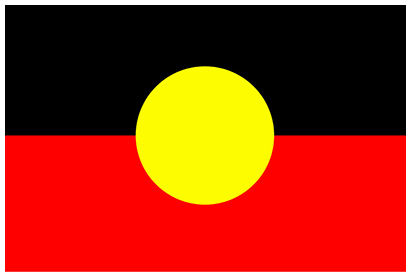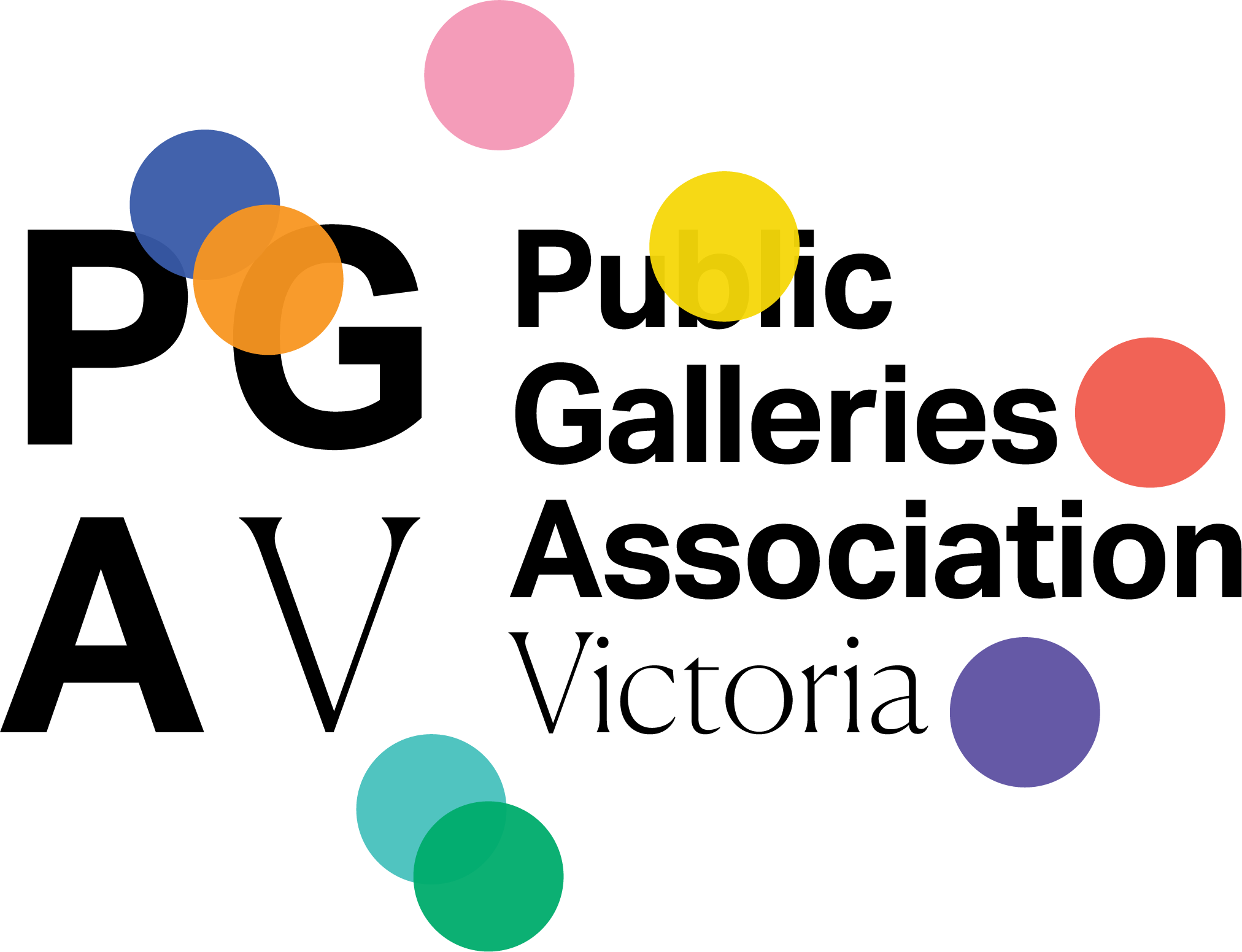senior curator
Professions in the Public Gallery Sector

andrew tetzlaff
Senior Curator
RMIT Culture
Image: Photography by Keelan O'Hehir.
Date: September 2022
Senior Curator
The Senior Curator leads the programming of the gallery, which incorporates diverse artistic styles and perspectives. They support the development and reporting of the annual budget, initiate ideas for public events and oversee the design, interpretation and logistics of exhibitions. They lead the development of an art collection and systems and procedures for collection management. They are generally responsible
for managing at least one member of staff.
For information about roles within public galleries see the PGAV Fact Sheet: Staffing Levels & Position Titles
How did you get started in your career and what formal qualifications or experience do you have?
My practice straddles both curation and art-making and, for me, one informs the other. My career began in art school. I studied fine art at the SMFA in Boston and simultaneously worked and interned at university galleries, commercial galleries and art museums in the US and UK. In 2006, I came to Australia to pursue an MFA at RMIT University, and after graduation I continued to make art and work in arts management. I was especially interested in grass-roots organisations and emerging practice, so in 2008 I joined the board of the artist-run space BLINDSIDE. For almost 10 years I curated projects for BLINDSIDE and collaboratively producing the gallery’s creative program. In late 2008, I also started working at RMIT. At first I managed the School of Art’s galleries, but later I also came to lecture in printmaking and took on the coordination of RMIT’s international studio residency program. In 2019, RMIT brought together its galleries and collections into RMIT Culture, and in 2021, I was appointed to the role of Senior Curator for RMIT Culture. Across this time, I had continued to make art and in 2014 enrolled in a PhD to take a deeper dive into my practice. All of these experiences, from developing works to encountering them—or even prosaically balancing budgets—comes in useful in my professional day-to-day.
What does your role as Senior Curator encompass?
I work with the Manager of Creative Production to coordinate and curate the exhibitions and programming for RMIT Gallery, the Design Hub Gallery and First Site. Since these galleries are located within a university, they function a bit differently to some others—connecting not only with local audience and the cultural sector, but also with RMIT’s communities and the education sector. We use our program to showcase and unpick cutting-edge practice-based research and also to provide learning and teaching opportunities for students and the community.
Most all of the work I do is co-produced—developed and delivered in collaboration with colleagues, external artists, other curators and arts professionals. Since each project and each team is a bit different, my role varies and is really defined by the engagement. While working on and shaping some projects might involve a lot of consultation, others might demand study… or a tight project management schedule. As I engage with a number of projects simultaneously, the role encompasses a broad range of responsibilities and requires flexibility.
What knowledge and skills do you think are most needed for this role?
As my projects are collaborations, I find listening, self-awareness and negotiation to be crucial skills. I rely on my organisational systems to keep me on track in a project, and on my foundational knowledge of art and design (both studied and practiced) to keep me on message. Finally—while it might be more a learned habit than a skill—I owe a lot to trusting my intuition and following my curiosity.
In your role how do you manage the interests of artists alongside the priorities of the gallery?
Galleries each have their own voice that is built from a complex set of priorities, values, histories, communities, and even architectures. If an artist is looking to situate their work into a gallery, they need to be aware of—and considerate of—that voice. As such, I think that part of the role of the curator is to communicate that voice to the artist. That can happen informally through conversations and correspondence or through formal agreements. If there is a misalignment between the artist and the gallery, then there is a good chance that one side might need to compromise on something across the project. If a conflict arises, then I think it simply comes down to moderating it quickly, fairly and responsibly.
How do you articulate curatorial ideas for broader engagement?
Approaching or opening a curatorial premise can sometimes be more difficult than coming up with the idea in the first place. While I don’t think there is a magic bullet to articulating a complex thought, I do think there are some good habits that can help. One important point I try to stick to is remember to writing for the audience and not at them. That includes sticking to clear and accessible language, getting to the point, and providing frequent handholds so people can stay with the ideas. Coming up with the idea and project rationale is really just one part of the equation—a more important part is the work put into figuring out how to take someone on the journey to it.
What has been your career highlight so far?
I am proud of the residency and exhibition program I helped produced for PROJECT SPACE / SPARE ROOM, of the projects I curated at BLINDSIDE, and of the exhibitions I have delivered with RMIT Culture. I have been excited to play a small part in enabling some amazing Australian art practices and have valued the opportunities I have had to represent Australia at international forums.
I’m particularly excited about the project I’m working on at the moment, which is being delivered in partnership with The Big Anxiety festival. The exhibition, Archives of Feeling, spans RMIT Gallery and RMIT Design Hub Gallery and explores how creativity can be used to reclaim complex experiences of distress, depression and trauma. It is a complex exhibition, but an incredibly important one.
Image: The Children's Sensorium, Archives of Feeling: Sensation, Connection, Community exhibition, RMIT Design Hub Gallery, 2022, Photo by Tobias Titz.
What are the key issues for public galleries into the future?
Public galleries are amazing community resources. They support and celebrate local culture, but they also connect us to deeper and distant histories. They are safe spaces for learning, reflection, curiosity and for thinking differently. Further, they are catalysts for economic growth. In my opinion, the world could currently use a few more places like this.
Unfortunately, many of the contributions that public galleries make to our lives are considered to be indirect or intangible, and many of the communities directly serviced by them are already fighting for support on multiple fronts. The insufficient and erratic funding that public galleries presently receive simply does not acknowledge their impact. One of the key issues now facing public galleries is to raise the public and political recognition of their social and cultural value.
The Public Galleries Association of Victoria (PGAV) acknowledges the Wurundjeri Woi-Wurrung people of the Kulin Nation as the Traditional Owners of the lands where our office is located, and all Traditional Owners of country throughout Victoria and Australia. We recognise Aboriginal and Torres Strait Islander peoples enduring traditions and continuing creative cultures. We pay our respect to Elders past, present and emerging.
We are an LGBTQIA+ friendly organisation that celebrates diversity. We are committed to providing safe, culturally appropriate, and inclusive services for all people, regardless of their ethnicity, faith, disability, sexuality, or gender identity.






